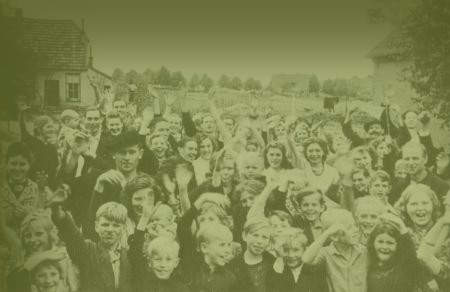The end of the Second World War war had a different meaning in the East than in the West. Although the German occupiers were driven out, the liberating army did not bring freedom nor democracy. Stalin’s totalitarian Soviet Union brought about a new subjugation. Estonia, Latvia and Lithuania were annexed; other Eastern European countries, nominally independent, were forced to adopt Communism as its ideology. In Poland, as in 1939-1941, Soviets and their Communist henchmen established a harsh regime. Some groups attempted to find accommodation with the Communists. Ordinary people rejoiced at the end of the brutal German occupation and tried to rebuild their lives. However, the new government wanted total control. All those not adhering to the ideology were suspect; all those loyal to the legal Polish Government in exile could be targeted by the dreaded secret police. Despite their bravery, many members of the anti-German resistance were arrested, tortured, put to trial and sentenced to hard labour or even death. To add insult to injury, Communist propaganda labelled them as Nazi collaborators.
Thousands again took to arms, in desperate hope that Communist rule would soon collapse. Others genuinely believed in the new system, which ostensibly offered opportunities for the members of peasant and workers class.
The culmination of the subjugation in Poland were the elections of 19 January 1947. Despite the international agreements, the results of the elections were falsified, giving the Communists total control of the Parliament and starting a Communist dictatorship. Only with the advent of the Solidarity movement and the economic collapse of the Soviet bloc in the late 1980s did democracy return to Poland.
